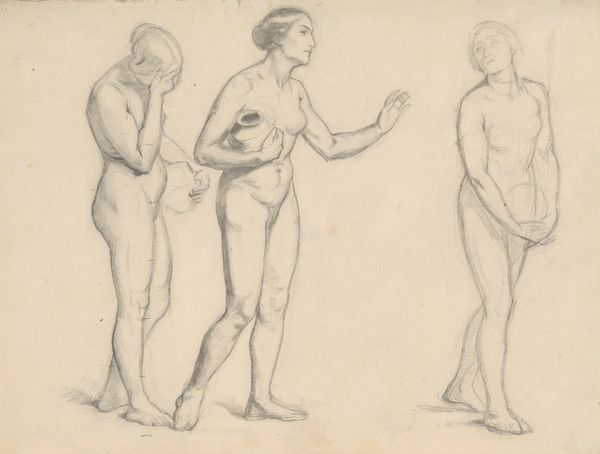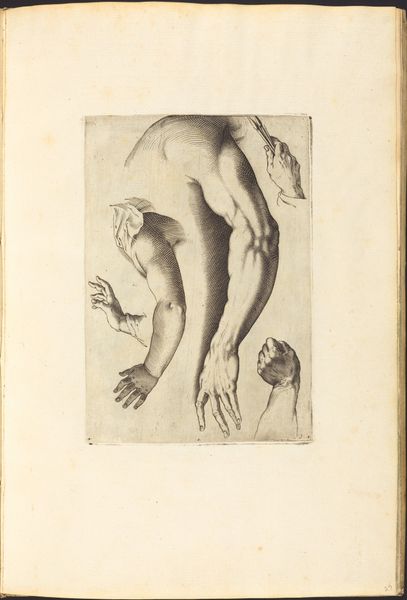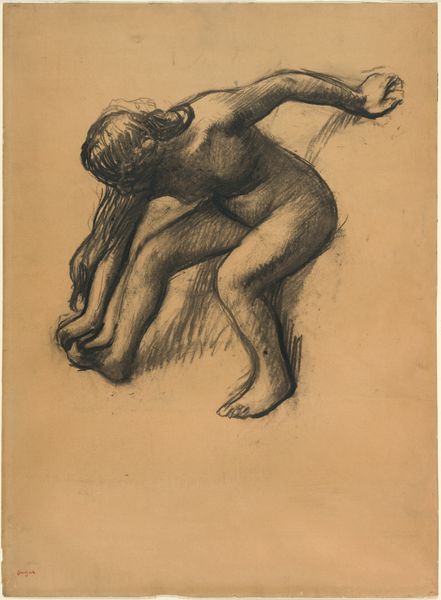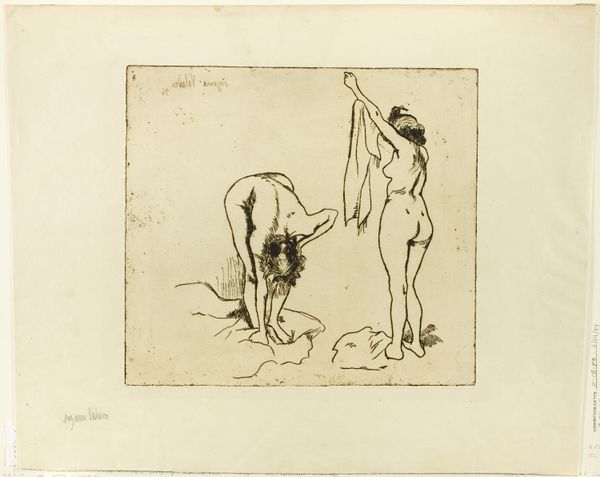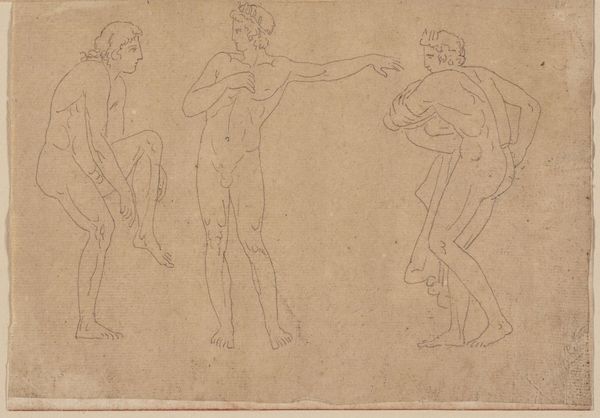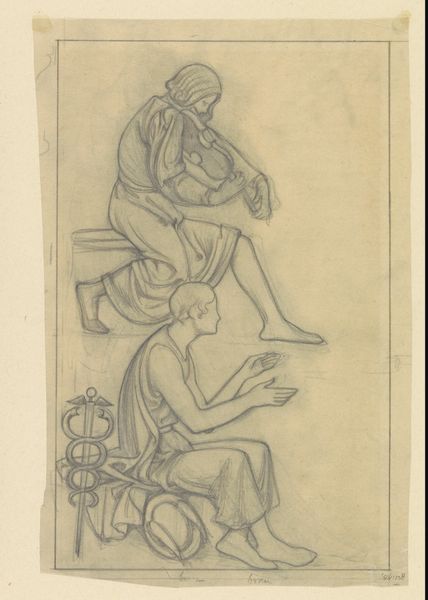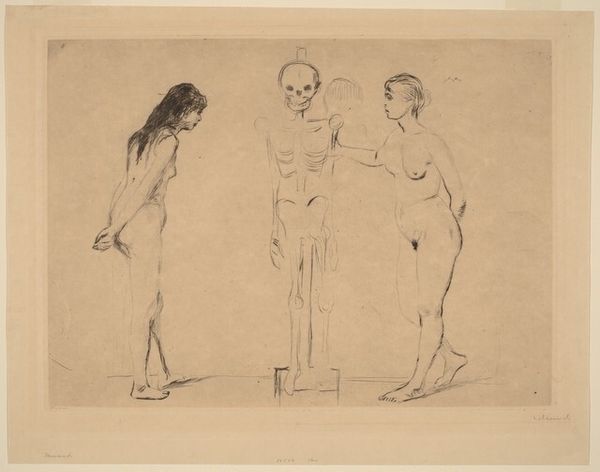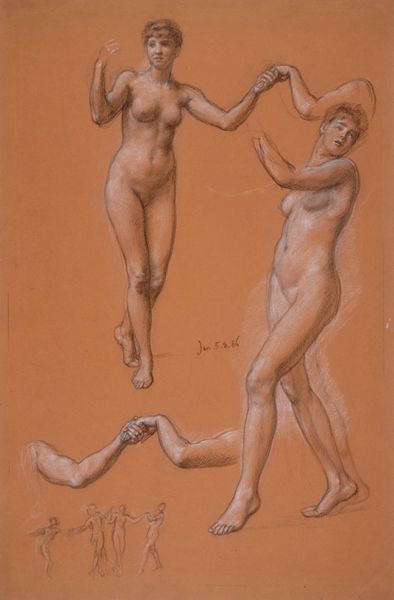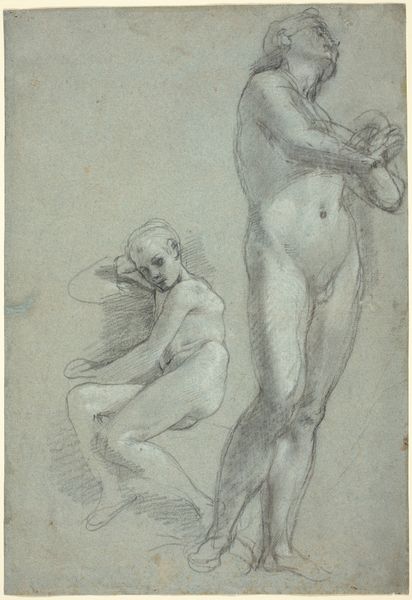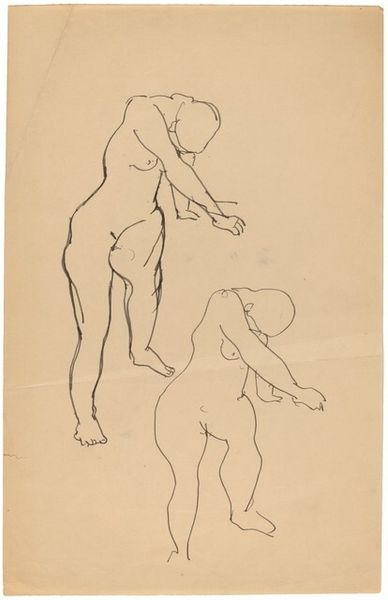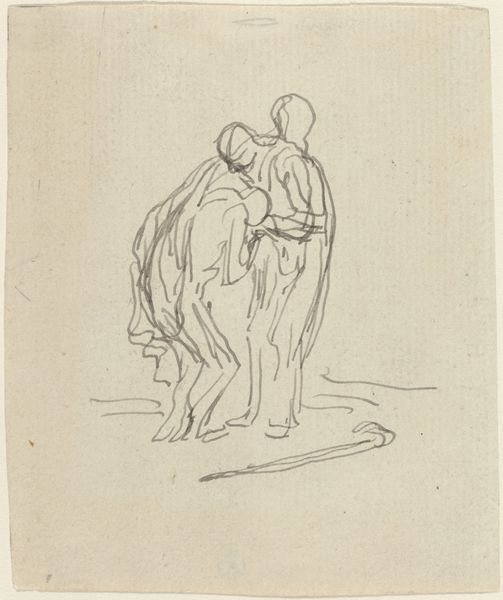
Dimensions: 528 × 497 mm
Copyright: Public Domain
Curator: Immediately, I see vulnerability. The charcoal lines, almost hesitant, outline these figures in such a raw state. Editor: Well said. We're looking at "Three Dancers," a work rendered between 1895 and 1900 by Edgar Degas, now residing here at The Art Institute of Chicago. It's primarily charcoal and pencil on paper. Curator: Notice how Degas overlaps the figures, almost creating a sense of ghostly presence, movement blurred across time. It suggests fleeting moments, anxieties perhaps. Do you get a sense of underlying stress in their postures? Editor: I think that resonates deeply within the context of ballet culture at the time. Degas was fascinated—almost obsessively—with ballet dancers. These pieces often offer critical glimpses behind the stage, the relentless demands, and the commodification of the female body in Parisian entertainment. Curator: Precisely. It's not just about beauty and grace, but also discipline and strain. The partial nudity and informal poses, these are not idealized representations. Degas hints at their humanity. I’m intrigued by their hands on their ribs—is it exhaustion? Frustration? Protection? Editor: Perhaps all those things at once. Think about the symbolic weight of performance. The ballerina often embodies ideals of purity and ethereal grace, but here we witness a breakdown of those constructed ideals, revealed through gesture and unadorned form. The stark, unfinished quality reinforces that unveiling. Curator: Indeed. There is a sense of unveiling that is both powerful and unnerving. We are presented with a reality, or a fragmented echo of one. The paper almost absorbs the figures. And how those muted shades speak to emotional weight... Editor: Absolutely. The drawing serves almost as a counter-narrative to the perfected images of dancers promoted in public. By showing them in these private moments of adjustment, reflection, and possibly doubt, Degas disrupts that spectacle and offers a nuanced commentary on labor, gender, and representation in modern life. Curator: Seeing beyond surface performance. Capturing transient emotional states. Art as memory, history, and lived experience distilled into a drawing. Thank you, Edgar Degas. Editor: A fascinating portrayal, certainly prompting thoughts beyond a typical pose.
Comments
No comments
Be the first to comment and join the conversation on the ultimate creative platform.
